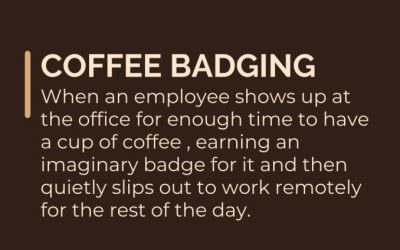The UK Government’s recent ‘Productivity Plan’ was attacked as lacking in original ideas and clear goals, and was slammed as “nothing more than a list of recycled policies”, by a group of MPs. It is clear that the UK is facing a long-term productivity problem which is being made worse by the financial crisis that the country has faced over the years. The economic downturn was labelled by MPs as “the most damaging financial crisis seen in generations”.
It seems as though the battle between productivity and the economy is transpiring as nothing more than a vicious circle. High levels of productivity contributes to growth, and growth prompts high levels of productivity. The Government’s efforts to “fix the foundations and create a more prosperous nation” is under severe criticism. Is it time to take the growing issue into our own hands?
Learning and Development
It is reported by the OECD that the UK suffers from several weaknesses in its overall skills base which is what is heavily contributing to the longstanding productivity gap with other European countries and the United States. According to the report, numeracy and literacy skills in England and Northern Ireland are among the lowest, and the standard and level of intermediate professional and technical skills are set to drop to 28th out of 30 European countries.
The rapid pace at which working environments are changing due to technology, laws, policies and global competition means that skill sets must be continually updated. Learning and development is a crucial organisational strategy that ensures a sustainable and successful organisation through the identification of core skills and competency required in order for staff to achieve to the best of their capability, and the implementation of development plans.
An employee is more likely to perform to a higher standard and demonstrate a higher level of productivity if they are confident they have the knowledge and capability to achieve in their role.
Company Vision
Any good business has a clear vision, and through this vision goals can be set. Goals can be set for both the business as a whole and for each employee as individuals benefiting everyone. Unfortunately, this isn’t always the case. A lack of clear vision and goals can be detrimental to productivity, satisfaction and ultimately retention. Productivity levels begin to deteriorate when people feel little purpose or as though their contributions are meaningless.
Begin by assessing the current state of your business and determining what your team expects of you, and what you need from your team in order to reach your objectives. Determine also, any personal career goals your employees may have and how they want to reach their goals. This way, when you set objectives for both the business and for individual employees, you can tailor them so that they benefit all parties. Productivity levels in likely to increase when an individual feels that they are not only contributing to the companies targets, but are working towards reaching personal goals too. Read more on implementing career development plans.
Setting KPIs is a great way of measuring and determining whether employees are meeting targets and fulfilling objectives, but be careful not to create additional stress or pressure to the employee, you will ultimately achieve the opposite of what you are trying to if you do. Set provisions in place in that cater for those who may underachieve, nurture these employees, identifying where the employee is struggling and aiding them in achieving goals, or adjusting objectives where necessary. Help your team reach their full potential rather than firing those who are underachieving. Don’t forget, a high turnover costs more to a company than simply nurturing and retaining your staff. Set goals that will not only benefit the business as a whole, but help your employees grow and reach their personal targets to the best of their potential.
Workplace Stress
Stress is detrimental to all aspects of an employee’s performance. According to research conducted by Towers Watson, employees suffering from high levels of stress have lower engagement levels, are less productive, and ultimately absenteeism levels are far greater compared to those who are not working under excessive pressure. Stress is inevitable in most working environments. They key to retaining and maintaining satisfaction and productivity levels among employees is helping your staff to manage stress more effectively. Time management plays a pivotal role in reducing stress. An overwhelming workload, too many demands and feeling like there is not enough time will undoubtedly trigger a sense of frustration and panic, and helping your employees to organise, prioritise and plan more effectively is the first step in managing productivity levels.
Of course, stress can have a positive effect on some, kick-starting adrenaline and motivating an individual to perform quicker in order to meet demands and requirements. But poor management and too much exposure to stress will eventually induce a lack of engagement and productivity, as well as negatively influencing loyalty and commitment to the company. Read more on stress management.
Lack of Effective Communication
One of the fundamentals to enhancing productivity is creating satisfaction, and the key to achieving that is by creating clear and effective communication. An effective system of communication means that all employees must have full knowledge of the hierarchy. Each member of staff must be aware of who they can talk to in regards to any issues they may be facing, and ensuring accessibility to the mentors and managers who deal with their issues is of paramount importance.
Creating clear communications refers to both interpersonal communication, and communication through technologies. Utilise technologies and systems that help employees compete tasks more efficiently whilst allowing them to share information, ideas and help and support colleagues. Tools such as Yammer and Office 365 are a great way of allowing staff to share and communicate efficiently. When communicating with employees, ensure that every comment you make is actionable; provide feedback to employees on a regular basis; and ensure that any criticisms are constructive. Following these three simple steps will promote open communication and encourage honesty. Read more on open communication.
If you are looking for someone to join your team who can help you manage employee productivity, satisfaction and retention, then call us today on 0207 788 6600 and we can help you find the right HR professional for the role.











